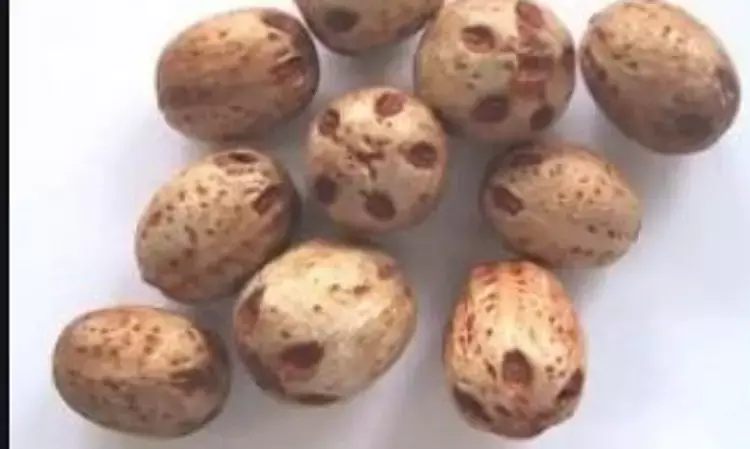- Home
- Medical news & Guidelines
- Anesthesiology
- Cardiology and CTVS
- Critical Care
- Dentistry
- Dermatology
- Diabetes and Endocrinology
- ENT
- Gastroenterology
- Medicine
- Nephrology
- Neurology
- Obstretics-Gynaecology
- Oncology
- Ophthalmology
- Orthopaedics
- Pediatrics-Neonatology
- Psychiatry
- Pulmonology
- Radiology
- Surgery
- Urology
- Laboratory Medicine
- Diet
- Nursing
- Paramedical
- Physiotherapy
- Health news
- Fact Check
- Bone Health Fact Check
- Brain Health Fact Check
- Cancer Related Fact Check
- Child Care Fact Check
- Dental and oral health fact check
- Diabetes and metabolic health fact check
- Diet and Nutrition Fact Check
- Eye and ENT Care Fact Check
- Fitness fact check
- Gut health fact check
- Heart health fact check
- Kidney health fact check
- Medical education fact check
- Men's health fact check
- Respiratory fact check
- Skin and hair care fact check
- Vaccine and Immunization fact check
- Women's health fact check
- AYUSH
- State News
- Andaman and Nicobar Islands
- Andhra Pradesh
- Arunachal Pradesh
- Assam
- Bihar
- Chandigarh
- Chattisgarh
- Dadra and Nagar Haveli
- Daman and Diu
- Delhi
- Goa
- Gujarat
- Haryana
- Himachal Pradesh
- Jammu & Kashmir
- Jharkhand
- Karnataka
- Kerala
- Ladakh
- Lakshadweep
- Madhya Pradesh
- Maharashtra
- Manipur
- Meghalaya
- Mizoram
- Nagaland
- Odisha
- Puducherry
- Punjab
- Rajasthan
- Sikkim
- Tamil Nadu
- Telangana
- Tripura
- Uttar Pradesh
- Uttrakhand
- West Bengal
- Medical Education
- Industry
Rare case of jejunal obstruction with lapsi seeds reported

In a recent development, researchers have reported the first case of Lapsi seed stones causing partial jejunal obstruction in a 60-year-old female presented with 40-years of non-specific abdominal pain.
The interesting findings of the case have been reported in International Journal of Surgery Case Reports.
Choerospondias axillaris (also called as Nepali hog plum, "Lapsi" in native Nepali language) is large, deciduous, dioecious and edible subtropical fruit tree in which the fruit is consumed fresh, pickled, or as a processed ingredient in a variety of sweet and sour products.
The Lapsi seed stone is generally not ingested. If it is eaten, it passes the healthy gastrointestinal (GI) tract uneventfully. What effect GI secretions have on Lapsi seed stone, when seeds resided within GI tract for longer durations, hasn't been studied in humans.
In general, foreign bodies are typically found impacted in pylorus, duodenum, duodeno-jejunal flexure, Mickel's diverticulum, ileo-caecal junction and previous surgical sites. Foreign body obstruction at distal part of jejunum is uncommon.
The aged female patient reported to the Surgical Outpatient Department (SOPD) with a chronic abdominal pain for 40-years. She complained of intermittent abdominal distension with mild to moderate abdominal pain. The pain was aggravated by eating and was associated with occasional nausea and vomiting of gastric contents. There was no reported change in bowel habits (frequency or consistency). She reported anorexia and gradual weight loss.
On clinical examination, her general condition was fair. She was conscious, alert, fully oriented. On inspection, her abdominal examination revealed asymmetric bilateral iliac fossa with mild bulging in right, compared to the left, iliac fossa. Hypoactive bowel sound was noted on auscultation. She exhibited mild tenderness, without rebound tenderness, guarding, or rigidity, at umbilical and right iliac fossa region during abdominal palpation.
On performing a contrast enhanced computed tomography (CECT) of abdomen and pelvis,it showed: (1) Dilated segment of jejunum with circumferential submucosal edema and abrupt distal narrowed lumen suggestive of stricture. (2) Multiple round (in axial plane) to oval (longitudinal plane) hyperdense foreign bodies of nearly similar size with air attenuating areas and spoke wheel appearance was noted in the dilated bowel .
Seeds of Choerospondias axillaris (Nepali hog plum, native language: lapsi) became the first suspicion after considering various possibilities.
An exploratory laparotomy was planned to assess the jejunal foreign body and the resulting chronic dilation. Nineteen lapsi seed stones (each measuring ∼2.5cm × 1.8cm × 1.8 cm) were removed. The postoperative recovery of patient was uneventful with complete resolution of pain.
For full article follow the link: https://doi.org/10.1016/j.ijscr.2020.08.048
Dr Satabdi Saha (BDS, MDS) is a practicing pediatric dentist with a keen interest in new medical researches and updates. She has completed her BDS from North Bengal Dental College ,Darjeeling. Then she went on to secure an ALL INDIA NEET PG rank and completed her MDS from the first dental college in the country – Dr R. Ahmed Dental College and Hospital. She is currently attached to The Marwari Relief Society Hospital as a consultant along with private practice of 2 years. She has published scientific papers in national and international journals. Her strong passion of sharing knowledge with the medical fraternity has motivated her to be a part of Medical Dialogues.
Dr Kamal Kant Kohli-MBBS, DTCD- a chest specialist with more than 30 years of practice and a flair for writing clinical articles, Dr Kamal Kant Kohli joined Medical Dialogues as a Chief Editor of Medical News. Besides writing articles, as an editor, he proofreads and verifies all the medical content published on Medical Dialogues including those coming from journals, studies,medical conferences,guidelines etc. Email: drkohli@medicaldialogues.in. Contact no. 011-43720751


